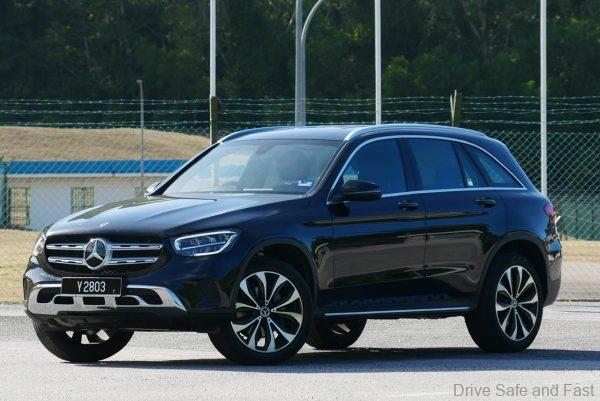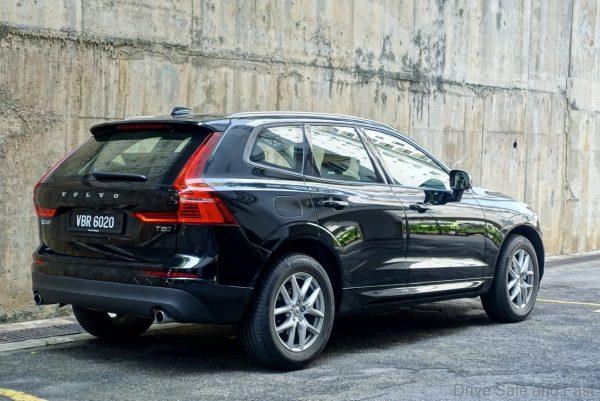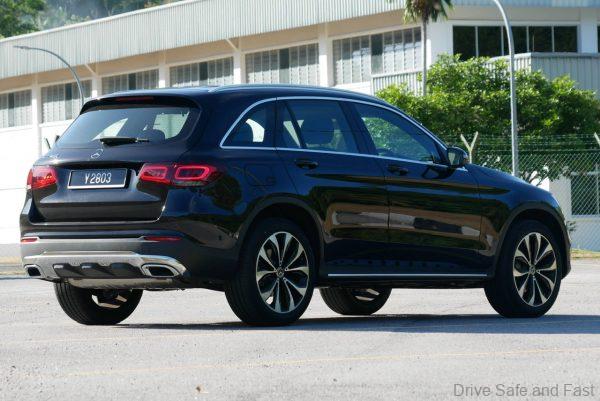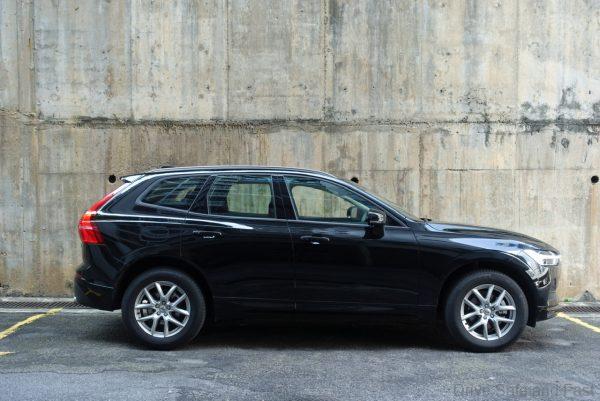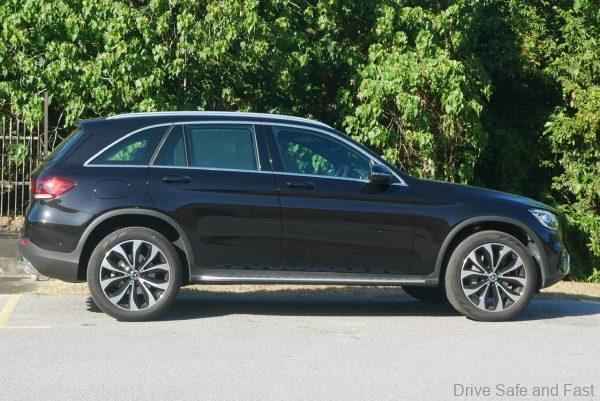The RM300,000 SUV Question: Volvo XC60 vs Mercedes-Benz GLC
Last month, we looked at two ‘entry-level’ premium SUVs from BMW and Lexus – the X3 and NX. Those two were priced around RM304K at that price neither has a clear competitive advantage. Today, we’re looking at two more ‘entry-level’ premium SUVs. This time, both are locally-assembled and both are from European makes.
It’s the Volvo XC60 T5 at RM279,410 versus the Mercedes-Benz GLC 200 at RM286,379. Now, that may sound like a huge price difference, but this is the price with 0% sales tax attached, which only lasts till the end of 2020. Once 2021 rolls around, prices will return to RM298,888 and RM299,888 respectively. These two are really, well matched and we can even factor in the sales tax discount as part of this comparison.

*Before we begin, we have actually driven the facelifted GLC 200 and the XC60 T5 (before the mild update), so click on their model names for more thoughts on each of these cars.

Value
In fact, since pricing is objective, let’s start there. Without the sales tax difference, the Volvo is just RM1,000 cheaper than the Benz. This is barely a difference, so let’s leave it alone.
Sales Tax Discount (2020 only)
Both vehicles are powered by 2-litre petrol engines and are locally-assembled, yet the Volvo XC60 T5 is a whole 6.5% cheaper until the end of 2020. The Mercedes-Benz GLC 200 is just 4.5% cheaper until the end of 2020. The price difference between the two expands from RM1,000 to RM6,969. Now, it’s a little more difficult to ignore the difference and we have to factor it in. The XC60 T5 is clearly the winner in this category.
Warranty
Warranties are handled differently between these two brands. Mercedes-Benz gives you 4 years with unlimited mileage, where Volvo offers 5 years but caps the mileage to 120,000km.
Mechanical Differences
The biggest similarity between the two SUVs is that they both use modern 2-litre turbocharged 4-cylinder petrol engines with direct injection.

Output
In the Volvo XC60 T5, the engine outputs 254hp and 350Nm of torque.
In the Mercedes-Benz GLC 200, the engine outputs 194hp and 320Nm of torque.
Transmission
In the XC60 T5, you get an 8-speed automatic that’s built by Aisin. The transmission here sends power to all four wheels.

In the GLC 200, you get a 9-speed automatic built by Daimler themselves. This transmission sends power to the rear wheels only.
There’s no clear winner here, but each has its advantages. The GLC’s has an additional gear ratio, while the XC60 comes with all-wheel drive.
Performance
The XC60 T5 is a little faster off the line, accelerating from 0-100km/h in 6.8 seconds, a whole second faster than the Benz.
However, the Benz is a faster machine with a top speed of 217km/h. For now, the Volvo XC60 has a top speed of 210km/h, but as Volvo’s 180km/h speed cap comes into place, the XC60 may eventually be artificially limited to this much slower top speed. The GLC 200 is also more fuel efficient at 6.6 – 6.9 l/100 km where the XC60 returns 7.8 l/100km. The GLC 200 wins in these two performance metrics.

The Volvo XC60 has double wishbone front suspension and multi-link rear suspension with a TRANSVERSE composite leaf spring. The GLC 200 has multi-link suspension on all four wheels. The XC60 T5 comes with Dynamic chassis tuning from the factory while the GLC 200 has off-road comfort suspension from the factory.
Dimensions
In terms of length, the Volvo is 3.2cm longer than the Benz. It’s also 1.2cm wider, and 1.9cm taller.
Despite those minor victories, the XC60 is also 137kg heavier, a significant weight difference indeed.
In the trunk, the GLC is able to deliver significantly more luggage space at 550 litre versus the XC60’s 505 litres. That being said, the XC60 gives you an actual space saver spare tyre — missing on the Benz.


On the subject of tyres and wheels, the XC60 T5 comes with 18″ alloys wrapped in 235/60R18 tyres whereas the GLC 200 comes with 20″ alloys in tyres measuring 255/45R20.

Safety
In terms of safety, both vehicles are excellent and scored well, though it’s tough to say if the Malaysian specification difference in the models tested will adversely change the way these vehicles perform in a crash.
In terms of real world differences, the GLC 200 has 7 airbags instead of just 6, the additional airbag being for the driver’s knees.

Both vehicles have some form of forward collision avoidance, but the Volvo’s active safety kit is slightly more sophisticated. The XC60 also extends the lead in this realm with steering correction with run-off-road protection and rear cross traffic alert.
Convenience Features
When it comes to premium cars, the gadgets and toys are always something to look forward to.

Mercedes-Benz makes a good impression here with a larger and horizontally aligned 10.25″ MBUX infotainment unit. The XC60 comes with a 9″ Sensus infotainment unit which is vertically aligned.

However, the Volvo has the clear lead in terms of audio with a 10-speaker 224W sound system. Mercedes-Benz doesn’t share information about the GLC 200’s sound system, but from our time with the car, we seem to remember it having as few as 4-6 speakers. Contact Mercedes-Benz Malaysia or visit a dealership for more accurate information.
The GLC takes the lead in a number of other ways, including having paddle shifters, auto parking and electric steering column adjustment.

However, the Volvo XC60 does some features a little better. For instance, it has keyless entry, while you’ll have to use your key fob to unlock the GLC every time you enter it. The XC60 also gives you contactless power boot operation.
Conclusion
As you can see, the two really do trade blows. The biggest win in the comparison goes to Volvo for their much larger sales tax discount. Other equipment differences are really a little subjective. Some prefer a lighter vehicle while others prefer having all-wheel drive. We suggest you test drive both SUVs before making your final decision.

